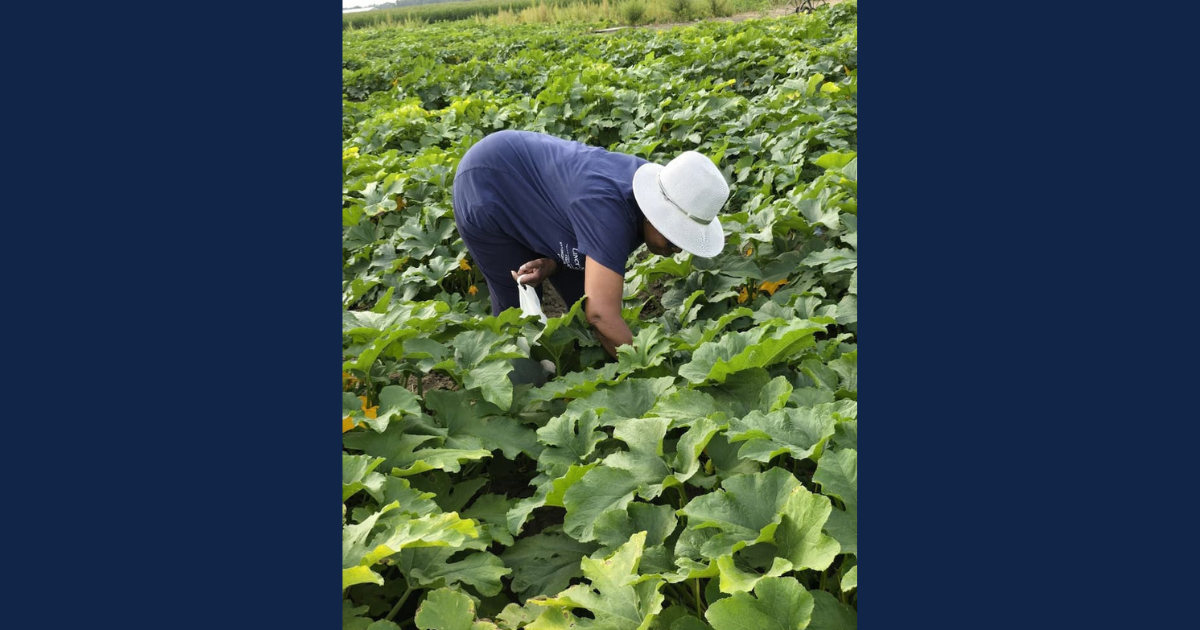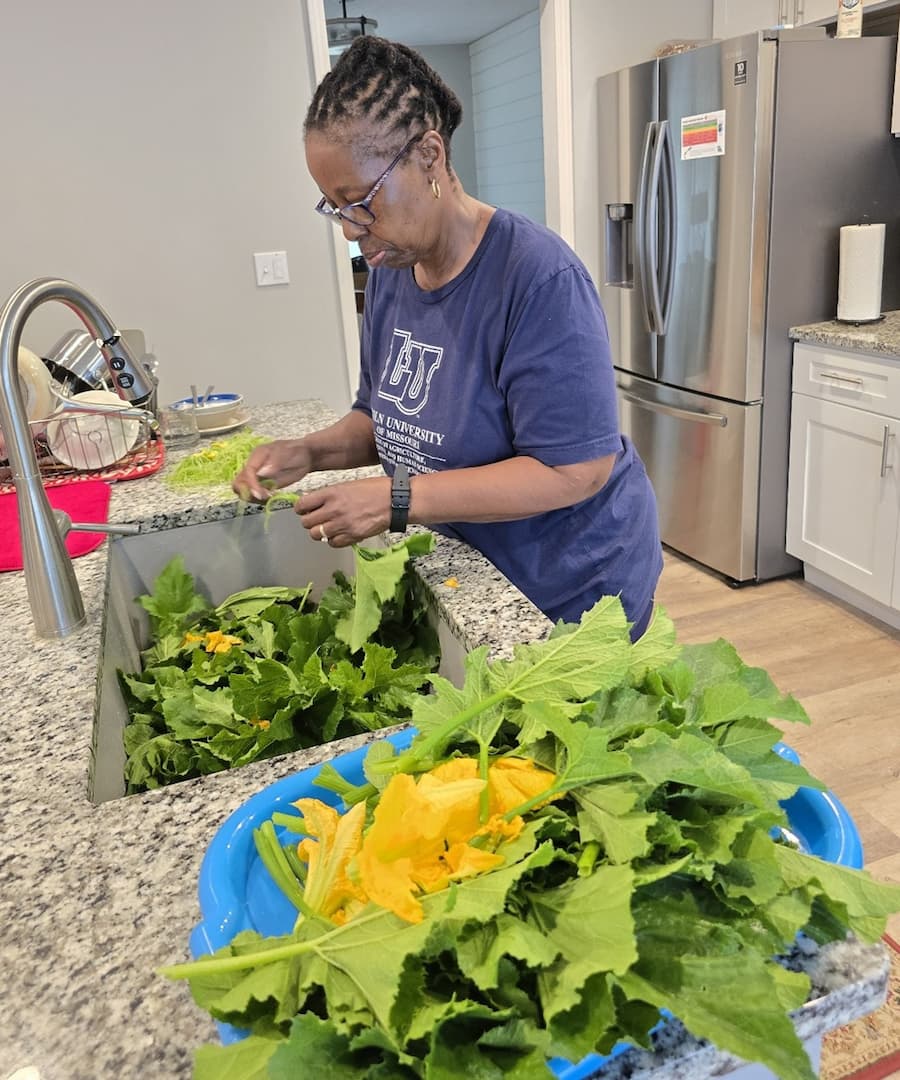Pumpkin Plant Offers Nutritional, Cultural Value
Office of Communications and Marketing
Young Hall
820 Chestnut Street
Jefferson City, MO 65101
 Dr. Judith Mutamba picks pumpkin leaves in a large field.
Dr. Judith Mutamba picks pumpkin leaves in a large field.
For many Americans, pumpkins are associated with Halloween carvings, tasty Thanksgiving pies and festive fall porch displays. In parts of Africa, however, the plant is recognized as a nutritional powerhouse.
Dr. Judith Mutamba, a native of Zimbabwe and the state extension specialist for human nutrition and health at Lincoln University of Missouri (LU), said pumpkins are more than decoration. In her home country, pumpkins are celebrated as a diverse and nourishing fruit.
“The pumpkin is a squash, so it is a fruit,” Mutamba said. “Every part of the plant above the ground is edible.”
Pumpkin leaves play a central role in African diets. Rich in iron, calcium, phosphorus, potassium and vitamins A, B and C, the leaves are comparable to spinach in texture and culinary use. Mutamba recommends sautéing the tender end-of-vine leaves in olive oil to preserve their nutrients.
“Water-soluble vitamins dissolve in water,” she said. “If you cook pumpkin leaves in water, you will lose some of those nutrients.”
The leaves also contain fat-soluble vitamins, which are better absorbed when cooked in oil, she added.
The plant’s flowers offer another edible option. The female flower produces the fruit, while the male flower, known as the “pumpkin bloom,” is also consumable. Its bright orange hue indicates a high vitamin A content, Mutamba said.
Even young pumpkins are cooked and eaten, resembling zucchini in texture. Seeds can be roasted for a quick snack, and pumpkin roots are considered medicinal in some cultures.
 Dr. Judith Mutamba cleans and prepares pumpkin leaves in her kitchen.
Dr. Judith Mutamba cleans and prepares pumpkin leaves in her kitchen.
Pumpkins themselves provide antioxidant protection against chronic illnesses such as cancer, diabetes, arthritis and cardiovascular disease. White and orange varieties are nutritionally similar, though slightly different.
Many Missouri residents do not have access to the nutritious foods they need. Because pumpkins are easy to grow and so many parts of the plant can be eaten, Mutamba believes this plant could lead to increased food security.
Pumpkins grow relatively quickly, germinating within one to two weeks, depending on soil and temperature. They thrive between the last frost of spring and the first frost of fall, though Mutamba noted they may also grow indoors with sufficient sunlight.
Her advice for home growers is simple: harvest carefully.
“You pick the leaves at the end of the vine, which are tender when you touch them,” she said.
She advised picking no more than two leaves per vine, but added that clipping the vine will cause it to branch out and produce more.
Beyond nutrition, Mutamba sees potential for new research at Lincoln University. She hopes to collaborate with colleagues to study nutritional differences across pumpkin parts and examine pest management strategies. Farmers who grow pumpkins for consumption, she said, may need to manage pests differently than those producing ornamental pumpkins.
From soups and sautés to seeds and blooms, Mutamba says the pumpkin plant offers far more than seasonal appeal.
